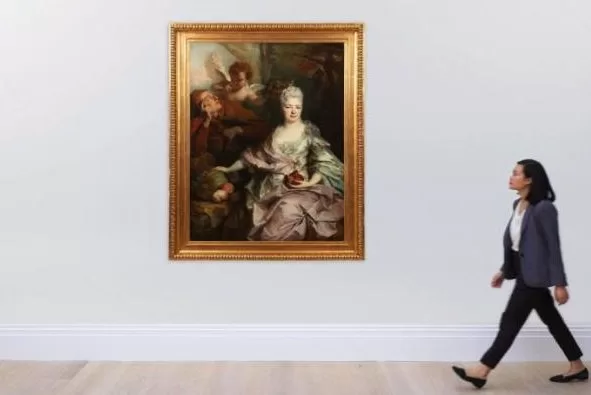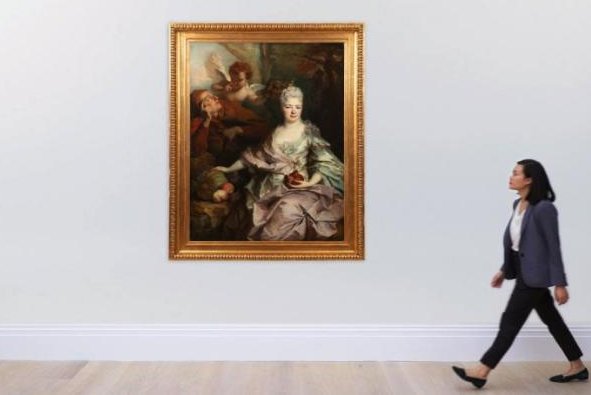1 of 5 | Nicolas de Largilliere’s “Portrait of a Lady as Pomona” went up for auction at Sotheby’s in New York City in 2022, after the family of Jewish collector Jules Strauss reclaimed the piece that was stolen and sold by Nazis during World War II. File Photo courtesy Sotheby’s
March 5 (UPI) — In an effort to return millions of pieces of Nazi-looted art, stolen during World War II, the U.S. State Department announced Tuesday a plan called Best Practices to “bolster restitution efforts” for Holocaust survivors and their families.
Secretary of State Antony Blinken announced the department’s Best Practices at the U.S. Holocaust Memorial Museum in Washington, D.C., to mark the 25th anniversary of the Washington Principles on Nazi-Confiscated Art.
“The Holocaust was not only the largest genocide in history, it was one of the largest mass thefts in history,” Blinken said.
“For decades, the international community knew little about the injustice of Nazi-looted possessions, including art. Looted art hung in galleries and in homes, without challenge,” Blinken added. “The Washington Principles, endorsed by 44 countries, began to change that.”
While thousands of works of art have been restored to their rightful owners over the last 25 years, Blinken said much of it has not been returned due to legal and financial barriers, which Tuesday’s Best Practices was created to overcome.
“Today, the State Department is proud to announce Best Practices to help overcome some of these hurdles. These Best Practices more precisely define what is considered Nazi-looted art. They identify solutions when provenance research is lacking. They remedy processes that favor current possessors over rightful owners. They urge countries to bolster their restitution efforts.”
Over the years, cases involving Jewish heirs working to retrieve their families’ possessions have gone all the way to the U.S. Supreme Court. One case in 2020 involved a collection of medieval artifacts known as the Guelph Treasure, which the heirs’ grandparents had been forced to sell to the Nazis.
Another case in 2022 involved a Pissarro painting, valued at $40 million, which was seized by the Nazis from a Jewish family at the start of World War II. Camille Pissarro’s 1897 impressionist “Rue Saint-Honore: Afternoon, Rain Effect” had been found in a Spanish art gallery.
The Metropolitan Museum of Art in New York City was sued in 2022 over a painting by Vincent Van Gogh that was allegedly looted by the Nazis in the 1930s.
And a Nicolas de Largilliere painting, that was stolen from Jewish collector Jules Strauss by the Nazis during World War II, was recovered by his heirs and was auctioned in 2022.
“These efforts are more important than ever, as Holocaust distortion and denial are again on the rise,” Blinken said Tuesday.
“We have seen time and again how the individuals, groups and societies, who downplay or refute the Shoah, foster anti-semitism and violence against Jews. These Best Practices offer a critical tool to counter their efforts to forget, to obfuscate — by memorializing the truth about what the Nazis did, who they hurt, what they took.”

